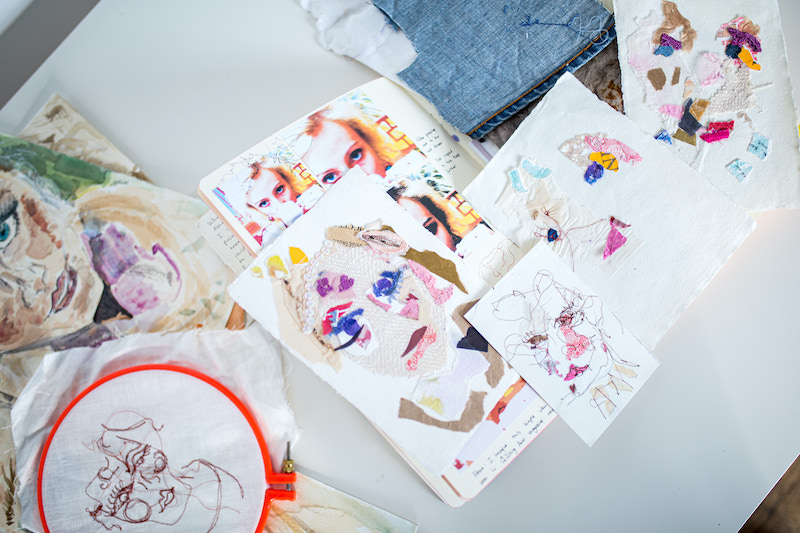From her large body of collected work, Textile Artist Ailish Henderson shares her art by printing her designs onto fabric and creating scarves and cushion covers – wearable art for the body and for the home. Ailish’s work reflects who she is and springs from emotional connections, a process that she finds to be healing.

How did you find yourself on an artist’s path? Always there? Lightbulb moment? Dragged kicking and screaming? Evolving?
I was brought up by parents who actively encouraged creativity. My grandmother on my father’s side was a painter and on my mother’s side dressmaking and tailoring was a foundation of the family. So the two entwined to give me a dual interest. I first turned my attention to fine art, then later at age sixteen I began to follow a textiles based line. I now marry both within my practice.
Who or what has inspired/influenced/empowered you?
Life experience, both good and bad can be the fuel behind the work. I am also inspired by a wealth of artists, not only aligning to my own practice. For example Claire Curneen, a sculptor, has inspired some of the figurative pieces within my work, although I do not work with the same media as her.
As an Amazon Associate I earn from qualifying purchases. Read more about our affiliate linking policy.

What is the connection between the act of making and emotional repair?
This is an integral part of my practice. I do not make or create without a driver, namely emotional connections. I tend to wear my heart on my sleeve and this flourishes within my work outcomes. And I feel strongly that the act of making with one’s hands is part of mending emotionally. I have recently written a critical paper on this very subject and actively discuss it when teaching and lecturing.

Tell us about your work. What do you do differently? What is your signature that makes your work stand out as yours?
I do not look at my work and think that it is ground breaking – it is simply a reflection of who I am.

How does your formal art education help your work develop? Does it ever get in the way?
Post degree, my understanding of art became more critical, yet refined. Sometimes I wish that I had not studied formally, as it can open your mind so much that you do not know what to do with the learning. I found myself taking everything apart and at times overthinking my art, which had previously just been enjoyable for joy’s sake. Yet I do now have a depth of experience which I can pass on to others, as well as an ability to annunciate my practice with a greater vocalisation of meaning.

When it comes to creating, are you more of a planner or an improviser? How do you make the leap from an idea in your head to the art you produce? Do you use a sketchbook or journal? How does that help your work develop? What advice do you have for someone who wants to begin a sketchbook/journal practice?
I love to work in sketchbooks before building a piece. I play with ideas in this diary-like “safe” environment and then connect my plays and tests to arrive at a final idea. Often I find that I enjoy these sketchbooks more than the final piece, as they are more natural and on the spur of the moment.



How does your studio organization contribute to your work process?
I find it difficult to work in a small untidy environment. My practice has changed over the years and with this my own needs have been altered. For example, in the early days it was all about experimenting with media and using many messy and often toxic materials. I have worked in screen printing, batik, dyeing, felting….the list goes on.
I now have a wealth of raw samples and art pieces to draw upon. These get professionally photographed or scanned into my PC for my records. From this bed of works, I choose the strongest to make digital print designs which I can use within the work I now produce, which is basically my own digital printing brand Ailish H. I print my artwork files onto materials such as silk, using UK-based professional printers. Since I do not have the facilities, I cannot do this at home. I receive the material back and I then use it to make scarves and interior design items, such as cushion covers.
This year I have been testing wallpaper and lampshades as items to add to my collections.
My silk squares are available to purchase through Handmade in Britain as well as my own artist website.






Interview posted July 2021
Browse through more inspiring stories from our makers on Create Whimsy.
